
Echo Quick Start Guide
¥45.77
Echo is a leading framework for creating web applications with the Go language. This book will show you how to develop scalable real-world web apps, RESTful services, and backend systems with Echo. About This Book ? The easiest way to learn how to build web apps with Echo ? Build a full working project ? For Go developers with only basic web development knowledge required Who This Book Is For You will need to know the basics of the Go language, and the general concepts of web development. What You Will Learn ? Key design considerations for high performance Echo applications ? How Echo handles routing ? How context is managed through the lifetime of the request and response pipeline ? Decrease complexity of your apps by developing middleware functions ? Interact with the request through request data bindings ? Interact with the response through response data renderings within the framework ? Use Echo's logging and error handling facilities ? Render Go templates within Echo to allow for server side rendering of content In Detail Echo is a leading framework for creating web applications with the Go language.? This book will show you how to develop scalable real-world web apps, RESTful services, and backend systems with Echo.? After a thorough understanding of the basics, you'll be introduced to all the concepts for a building real-world web system with Echo. You will start with the the Go HTTP standard library, and setting up your work environment. You will move on to Echo handlers, group routing, data binding, and middleware processing. After that, you will learn how to test your Go application and use templates.? By the end of this book you will be able to build your very own high performance apps using Echo. A Quick Start Guide is a focussed, shorter title which provides a faster paced introduction to a technology. They are for people who don’t need all the detail at this point in their learning curve. The presentation has been streamlined to concentrate on the things you really need to know, rather than everything. Style and approach This book creates a working example of a web application written with the Echo framework, and shows you enough of Echo to give context for a developer to bootstrap a high performance web application with the smallest amount of development time.

Python Penetration Testing Essentials
¥54.49
This book gives you the skills you need to use Python for penetration testing, with the help of detailed code examples. This book has been updated for Python 3.6.3 and Kali Linux 2018.1. About This Book ? Detect and avoid various attack types that put the privacy of a system at risk ? Leverage Python to build efficient code and eventually build a robust environment ? Learn about securing wireless applications and information gathering on a web server Who This Book Is For If you are a Python programmer, a security researcher, or an ethical hacker and are interested in penetration testing with the help of Python, then this book is for you. Even if you are new to the field of ethical hacking, this book can help you find the vulnerabilities in your system so that you are ready to tackle any kind of attack or intrusion. What You Will Learn ? The basics of network pentesting including network scanning and sniffing ? Wireless, wired attacks, and building traps for attack and torrent detection ? Web server footprinting and web application attacks, including the XSS and SQL injection attack ? Wireless frames and how to obtain information such as SSID, BSSID, and the channel number from a wireless frame using a Python script ? The importance of web server signatures, email gathering, and why knowing the server signature is the first step in hacking In Detail This book gives you the skills you need to use Python for penetration testing (pentesting), with the help of detailed code examples. We start by exploring the basics of networking with Python and then proceed to network hacking. Then, you will delve into exploring Python libraries to perform various types of pentesting and ethical hacking techniques. Next, we delve into hacking the application layer, where we start by gathering information from a website. We then move on to concepts related to website hacking—such as parameter tampering, DDoS, XSS, and SQL injection. By reading this book, you will learn different techniques and methodologies that will familiarize you with Python pentesting techniques, how to protect yourself, and how to create automated programs to find the admin console, SQL injection, and XSS attacks. Style and approach The book starts at a basic level and moves to a higher level of network and web security. The execution and performance of code are both taken into account.
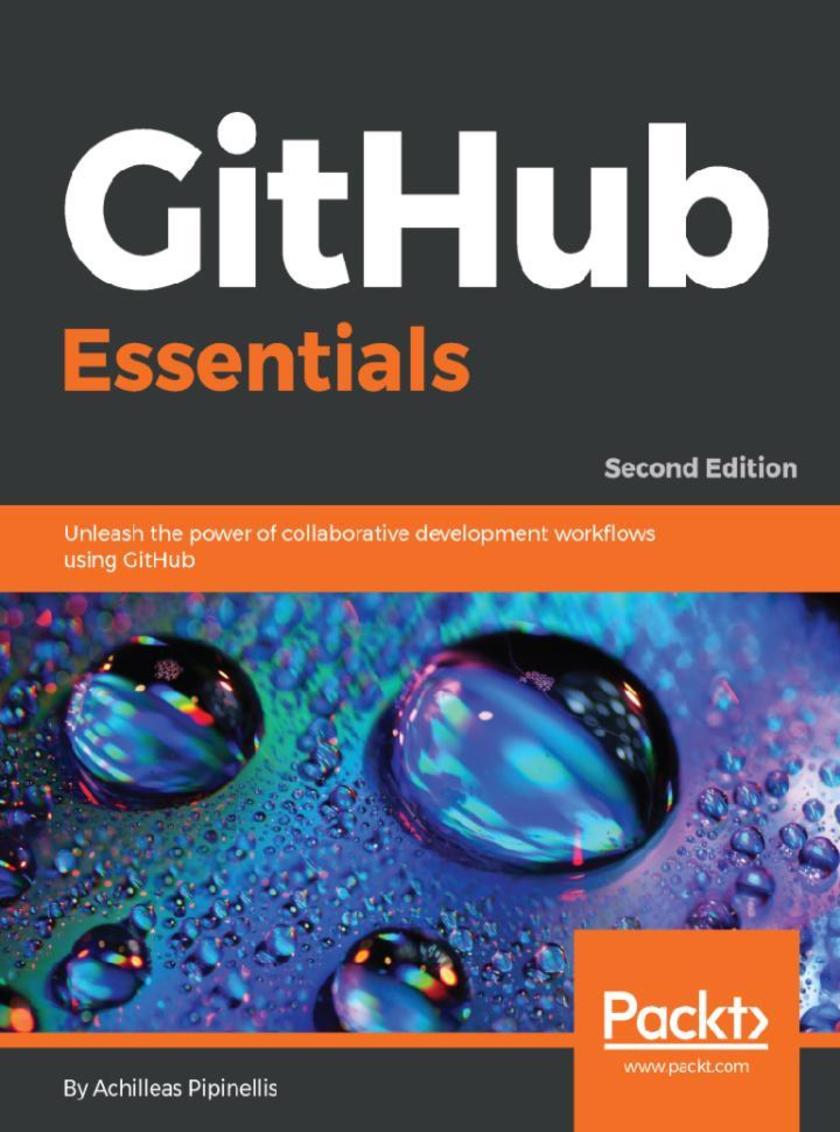
GitHub Essentials
¥54.49
This book will teach you what you need to know to start using GitHub effectively for collaborating and working on your software projects. About This Book ? Effectively use GitHub by learning its key features to leverage the power of Git and make collaboration on code easy to work with. ? Be more productive on the development workflow of your projects using the valuable toolset that GitHub provides. ? Explore the world of GitHub by following simple, step-by-step, real-world scenarios accompanied by helpful, explanatory screenshots. Who This Book Is For This book is for experienced or novice developers with a basic knowledge of Git. If you ever wanted to learn how big projects such as Twitter, Google, or even GitHub collaborate on code, then this book is for you. What You Will Learn ? Create and upload repositories to your account ? Create organizations and manage teams with different access levels on repositories ? Use the issue tracker effectively and add context to issues with labels and milestones ? Create, access, and personalize your user account and profile settings ? Build a community around your project using the sophisticated tools GitHub provides ? Create GitHub pages and understand web analytics In Detail Whether you are an experienced developer or a novice, learning to work with Version Control Systems is a must in the software development world. Git is the most popular tool for that purpose, and GitHub was built around it, leveraging its powers by bringing it to the web. Starting with the basics of creating a repository, you will then learn how to manage the issue tracker, the place where discussions about your project take place. Continuing our journey, we will explore how to use the wiki and write rich documentation that will accompany your project. You will also master organization/team management and some of the features that made GitHub so well known, including pull requests. Next, we will focus on creating simple web pages hosted on GitHub and lastly, we will explore the settings that are configurable for a user and a repository. Style and approach This book will take you through some of the most important features of one of the most popular tools, GitHub, which is used to bring developers together from all around the world to discover, share, and build better software. At each step of the way, you will learn about important approaches used in GitHub, including creating a repository, managing teams, creating GitHub pages, and watching your repository's web analytics, among others.
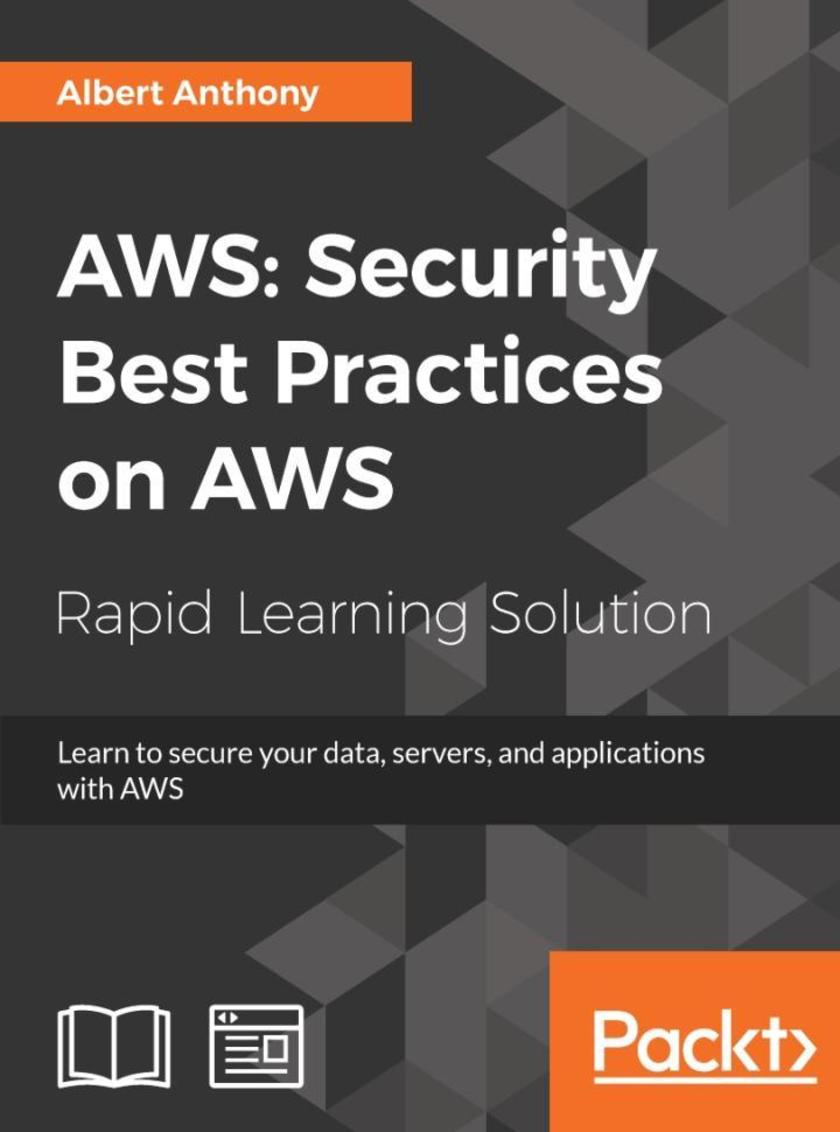
AWS: Security Best Practices on AWS
¥73.02
Delve deep into various security aspects of AWS to build and maintain a secured environment About This Book ? Learn to secure your network, infrastructure, data, and applications in AWS cloud ? Use AWS managed security services to automate security ? Dive deep into various aspects such as the security model, compliance, access management and much more to build and maintain a secured environment ? Explore Cloud Adoption Framework (CAF) and its components ? Embedded with assessments that will help you revise the concepts you have learned in this book Who This Book Is For This book is for all IT professionals, system administrators, security analysts, solution architects, and chief information security officers who are responsible for securing workloads in AWS for their organizations. What You Will Learn ? Get familiar with VPC components, features, and benefits ? Learn to create and secure your private network in AWS ? Explore encryption and decryption fundamentals ? Understand monitoring, logging, and auditing in AWS ? Ensure data security in AWS ? Secure your web and mobile applications in AWS ? Learn security best practices for IAM, VPC, shared security responsibility model, and so on In Detail With organizations moving their workloads, applications, and infrastructure to the cloud at an unprecedented pace, security of all these resources has been a paradigm shift for all those who are responsible for security; experts, novices, and apprentices alike. This book focuses on using native AWS security features and managed AWS services to help you achieve continuous security. Starting with an introduction to Virtual Private Cloud (VPC) to secure your AWS VPC, you will quickly explore various components that make up VPC such as subnets, security groups, various gateways, and many more. You will also learn to protect data in the AWS platform for various AWS services by encrypting and decrypting data in AWS. You will also learn to secure web and mobile applications in AWS cloud. This book is ideal for all IT professionals, system administrators, security analysts, solution architects, and chief information security officers who are responsible for securing workloads in AWS for their organizations. This book is embedded with useful assessments that will help you revise the concepts you have learned in this book. Style and approach This book follows a practical approach delving into different aspects of AWS security. It focuses on using native AWS security features and managed AWS services to help you achieve continuous security. Note: This book is a blend of text and quizzes, all packaged up keeping your journey in mind. It includes content from the following Packt product: ? Mastering AWS Security by Albert Anthony
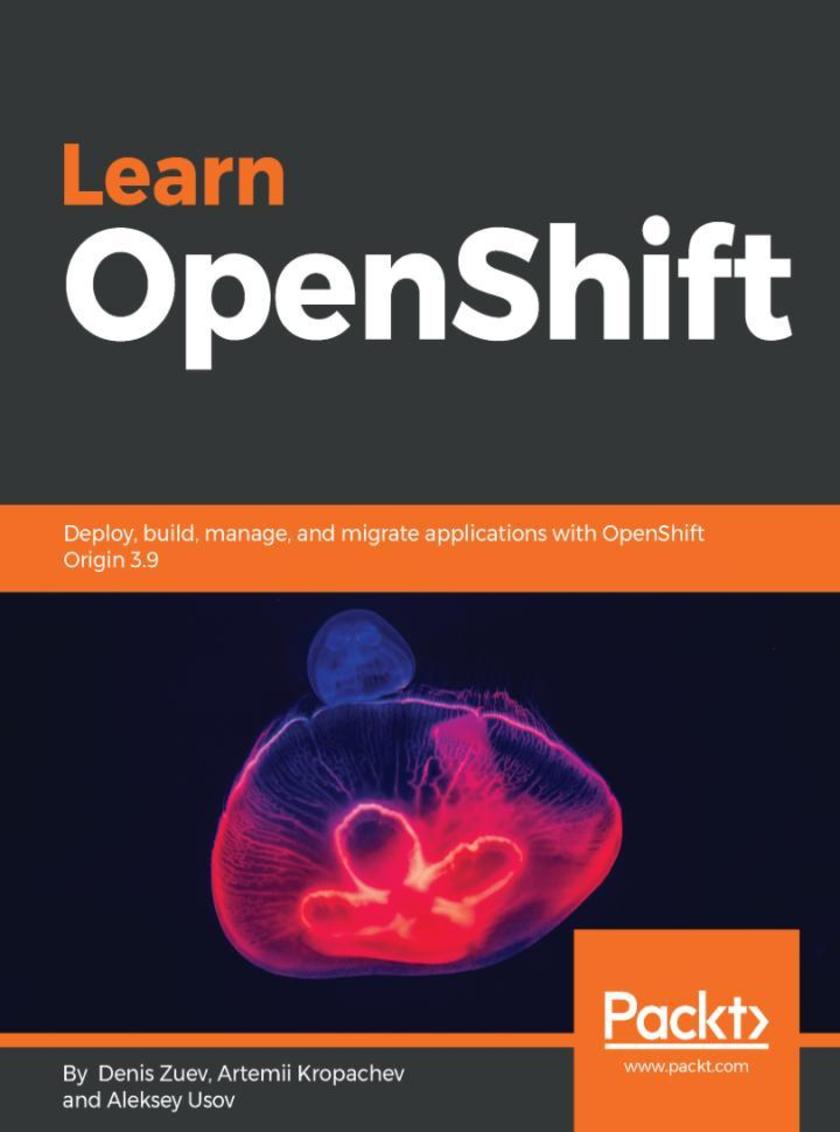
Learn OpenShift
¥69.75
Take advantage of Kotlin's concurrency primitives to write efficient multithreaded applications Key Features *Learn Kotlin’s unique approach to multithreading *Work through practical examples that will help you write concurrent non-blocking code *Improve the overall execution speed in multiprocessor and multicore systems Book Description The primary requirements of modern-day applications are scalability, speed, and making the most use of hardware. Kotlin meets these requirements with its immense support for concurrency. Many concurrent primitives of Kotlin, such as channels and suspending functions, are designed to be non-blocking and efficient. This allows for new approaches to concurrency and creates unique challenges for the design and implementation of concurrent code. Learning Concurrency in Kotlin addresses those challenges with real-life examples and exercises that take advantage of Kotlin's primitives. Beginning with an introduction to Kotlin's coroutines, you will learn how to write concurrent code and understand the fundamental concepts needed to be able to write multithreaded software in Kotlin. You'll explore how to communicate between and synchronize your threads and coroutines to write asynchronous applications that are collaborative. You'll also learn how to handle errors and exceptions, as well as how to leverage multi-core processing. In addition to this, you’ll delve into how coroutines work internally, allowing you to see the bigger picture. Throughout the book you'll build an Android application – an RSS reader – designed and implemented according to the different topics covered in the book What you will learn *Understand Kotlin’s approach to concurrency *Implement sequential and asynchronous suspending functions *Create suspending data sources that are resumed on demand *Explore the best practices for error handling *Use channels to communicate between coroutines *Uncover how coroutines work under the hood Who this book is for If you’re a Kotlin or Android developer interested in learning how to program concurrently to enhance the performance of your applications, this is the book for you.
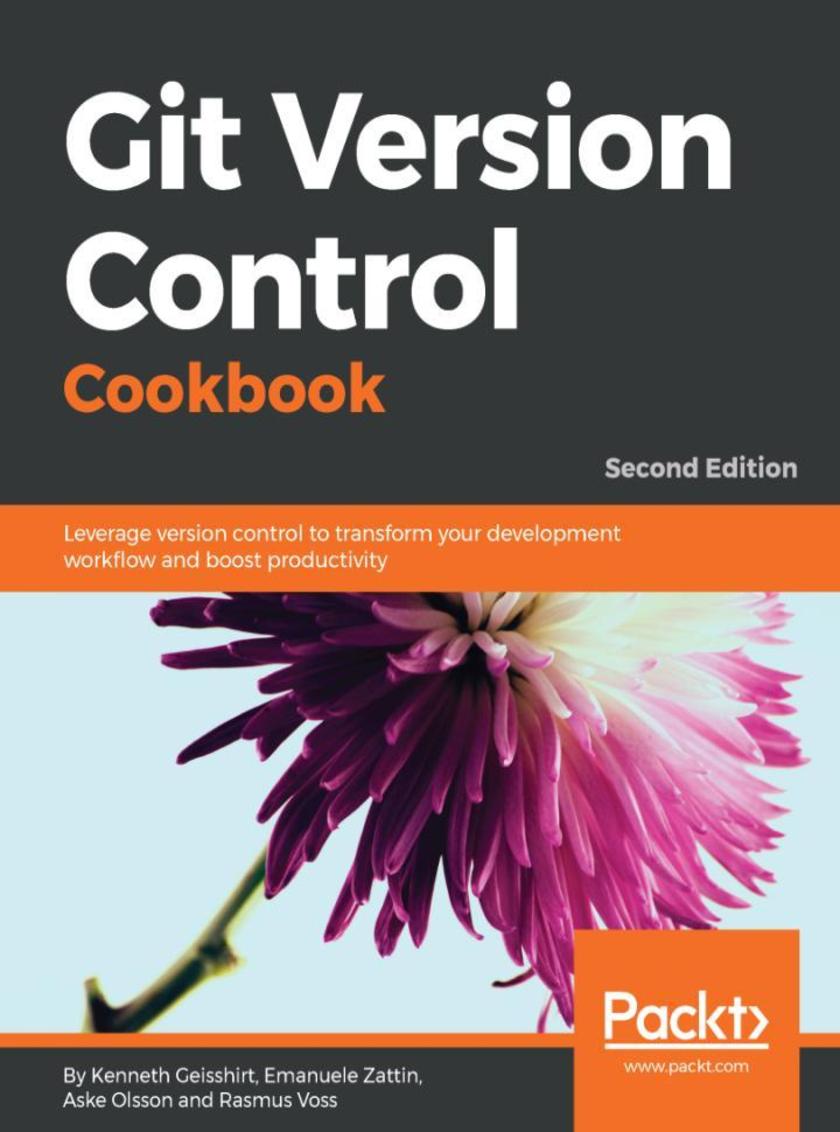
Git Version Control Cookbook
¥78.47
A series of practical recipes to simplify the Git learning experience and increase your productivity when using Git version control Key Features *Explore practical recipes to use Git’s most advanced features *Learn how Git references its objects and how history is recorded *Use reflog and git fsck to recover lost information Book Description Git is one of the most popular tools for versioning. Git Version Control Cookbook builds on the success of the previous edition and provides you with an up-to-date guide to solving problems related to versioning. You’ll start by learning about the Git data model and how it stores files and looks at commits. By using simple commands, you’ll learn how to navigate through the database. Once you have accustomed yourself to the basics, you’ll explore techniques to configure Git with comprehensive examples and configuration targets. You’ll gain insights into improving your understanding of branches and recovery from mistakes — right from committing to a wrong branch to recovering lost commits or files. You’ll then move on to discovering the features that Git rebase has to offer and use regular Git merge on other branches. You’ll explore Git notes and learn how to utilize the update, list, and search commands. In addition to this, you’ll learn how to extract metadata from repositories and automate your daily tasks using Git hooks. You’ll then study in detail repository maintenance, patching, and offline sharing. By the end of the book, you’ll have grasped various tips and tricks for everyday usage, while increasing your knowledge of Git providers, integrations, and clients. What you will learn *Understand the Git data model and use commands to navigate the database *Find out how you can recover lost commits or files *Force a rebase on some branches and use regular Git to merge on the rest *Master the techniques required to extract metadata from repositories *Explore Git notes and learn about the various features that it offers *See how to decode different subcommands Who this book is for The Git Version Control Cookbook is for you if you are a developer or Build Release manager looking for a full-fledged practical guide that will take your Git knowledge to the next level. Basic knowledge of GNU tools and shell or bash scripting is needed.
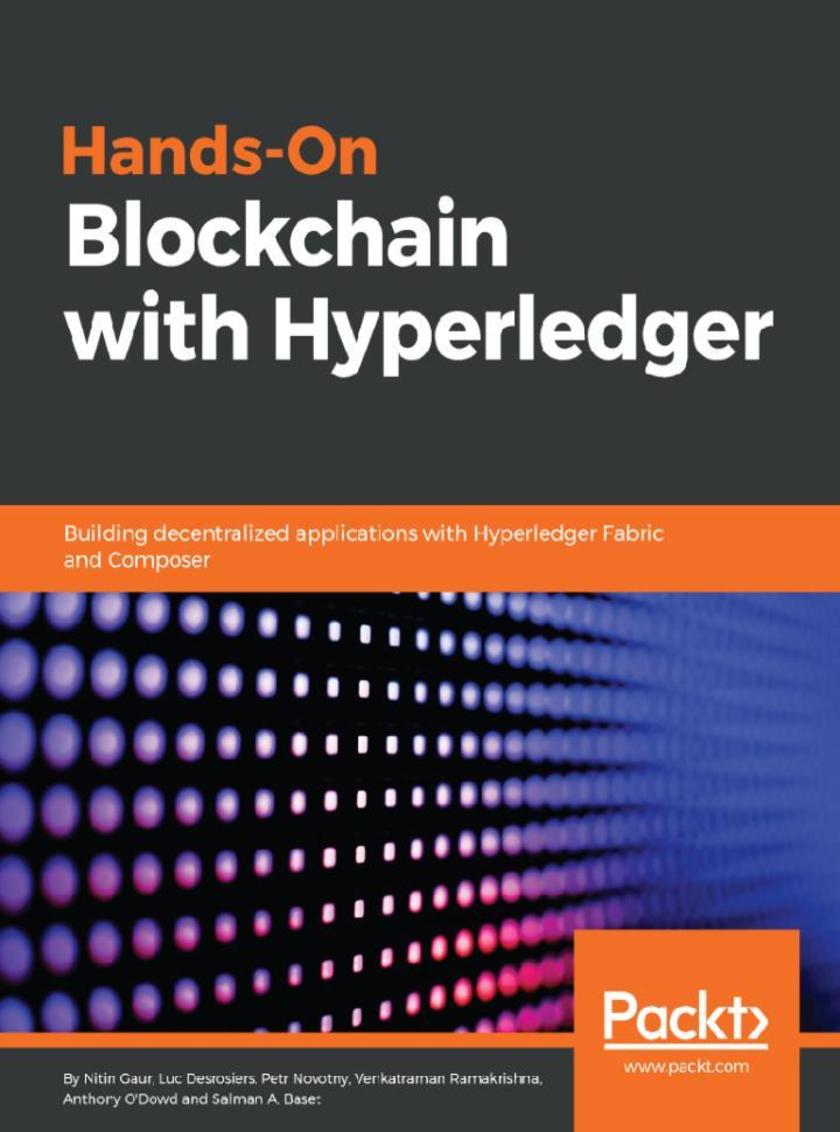
Hands-On Blockchain with Hyperledger
¥82.83
Leverage the power of Hyperledger Fabric to develop Blockchain-based distributed ledgers with ease About This Book ? Write your own chaincode/smart contracts using Golang on hyperledger network ? Build and deploy decentralized applications (DApps) ? Dive into real world blockchain challenges such as integration and scalability Who This Book Is For The book benefits business leaders as it provides a comprehensive view on blockchain business models, governance structure, and business design considerations of blockchain solutions. Technology leaders stand to gain a lot from the detailed discussion around the technology landscape, technology design, and architecture considerations in the book. With model-driven application development, this guide will speed up understanding and concept development for blockchain application developers. The simple and well organized content will put novices at ease with blockchain concepts and constructs. What You Will Learn ? Discover why blockchain is a game changer in the technology landscape ? Set up blockchain networks using basic Hyperledger Fabric deployment ? Understand the considerations for creating decentralized applications ? Learn the process of creating good business networks using Hyperledger ? Write Smart Contracts quickly with Hyperledger Composer ? Design transaction model and chaincode with Golang ? Deploy Composer REST Gateway to access the Composer transactions ? Discern how business network impacts your Hyperledger Fabric solutions In Detail Blockchain and Hyperledger technologies are hot topics. Hyperledger Fabric and Hyperledger Composer are open source projects that help organizations create private, permissioned blockchain networks. Applications that exploit them include finance, banking, supply chains, IoT, and much more. This book will be an easy reference to explore and build blockchain networks using Hyperledger technologies. This book will start by explaining the blockchain evolution, including an overview of relevant blockchain technologies. You will learn how to configure Hyperledger Fabric on a cloud platform. Understand the architectural components of Hyperledger Fabric, and how they are configured to build private blockchain networks, and applications that connect to them. You'll build up a network and application from scratch, starting with first principles. You'll learn how to implement smart contracts in chaincode and much more on the Hyperledger network. By the end of this book, you will be able to build and deploy your own decentralized applications using Hyperledger, addressing the key pain points encountered in the blockchain life cycle. Style and approach An easy-to-follow step by step guide which will help you get to grips with real world application of Hyperledger
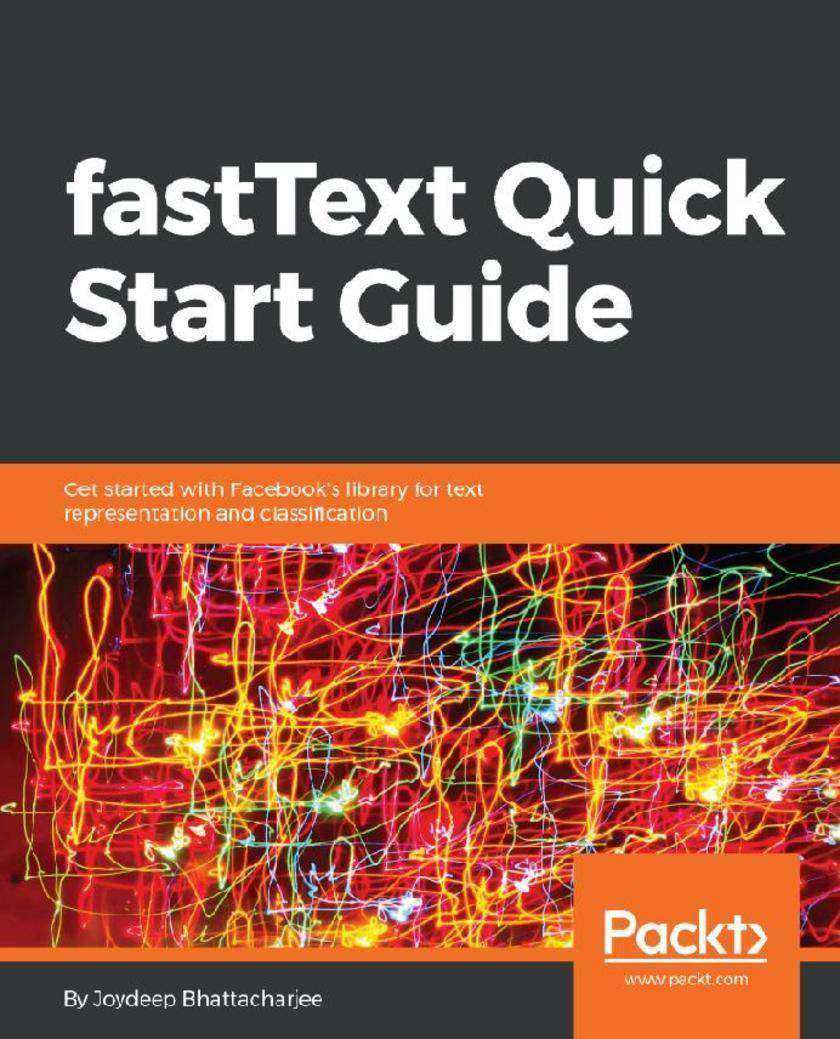
fastText Quick Start Guide
¥52.31
Perform efficient fast text representation and classification with Facebook's fastText library Key Features *Introduction to Facebook's fastText library for NLP *Perform efficient word representations, sentence classification, vector representation *Build better, more scalable solutions for text representation and classification Book Description Facebook's fastText library handles text representation and classification, used for Natural Language Processing (NLP). Most organizations have to deal with enormous amounts of text data on a daily basis, and gaining efficient data insights requires powerful NLP tools such as fastText.? This book is your ideal introduction to fastText. You will learn how to create fastText models from the command line, without the need for complicated code. You will explore the algorithms that fastText is built on and how to use them for word representation and text classification.? Next, you will use fastText in conjunction with other popular libraries and frameworks such as Keras, TensorFlow, and PyTorch.? Finally, you will deploy fastText models to mobile devices. By the end of this book, you will have all the required knowledge to use fastText in your own applications at work or in projects. What you will learn *Create models using the default command line options in fastText *Understand the algorithms used in fastText to create word vectors *Combine command line text transformation capabilities and the fastText library to implement a training, validation, and prediction pipeline *Explore word representation and sentence classification using fastText *Use Gensim and spaCy to load the vectors, transform, lemmatize, and perform other NLP tasks efficiently *Develop a fastText NLP classifier using popular frameworks, such as Keras, Tensorflow, and PyTorch Who this book is for This book is for data analysts, data scientists, and machine learning developers who want to perform efficient word representation and sentence classification using Facebook's fastText library. Basic knowledge of Python programming is required.

Managing Mission - Critical Domains and DNS
¥81.74
This book will give you an all encompassing view of the domain name ecosystem combined with a comprehensive set of operations strategies. About This Book ? Manage infrastructure, risk, and management of DNS name servers. Get hands-on with factors like types of name servers, DNS queries and and so on. ? Practical guide for system administrators to manage mission-critical servers ? Based on real-world experience - Written by an industry veteran who has made every possible mistake within this field. Who This Book Is For Ideal for sysadmins, webmasters, IT consultants, and developers-anyone responsible for maintaining your organization's core DNS What You Will Learn ? Anatomy of a domain - how a domain is the sum of both its DNS zone and its registration data, and why that matters. ? The domain name ecosystem - the role of registries, registrars and oversight bodies and their effect on your names. ? How DNS queries work - queries and responses are examined including debugging techniques to zero in on problems. ? Nameserver considerations - alternative nameserver daemons, numbering considerations, and deployment architectures. ? DNS use cases - the right way for basic operations such as domain transfers, large scale migrations, GeoDNS, Anycast DNS. ? Securing your domains - All aspects of security from registrar vendor selection, to DNSSEC and DDOS mitigation strategies. In Detail Managing your organization's naming architecture and mitigating risks within complex naming environments is very important. This book will go beyond looking at “how to run a name server” or “how to DNSSEC sign a domain”, Managing Mission Critical Domains & DNS looks across the entire spectrum of naming; from external factors that exert influence on your domains to all the internal factors to consider when operating your DNS. The readers are taken on a comprehensive guided tour through the world of naming: from understanding the role of registrars and how they interact with registries, to what exactly is it that ICANN does anyway? Once the prerequisite knowledge of the domain name ecosystem is acquired, the readers are taken through all aspects of DNS operations. Whether your organization operates its own nameservers or utilizes an outsourced vendor, or both, we examine the complex web of interlocking factors that must be taken into account but are too frequently overlooked. By the end of this book, our readers will have an end to end to understanding of all the aspects covered in DNS name servers. Style and approach The book is divided into two parts, the first part looks at the wider domain name ecosystem: registries, registrars and oversight policies. The second and larger part goes into operations. Every aspect of naming is considered from the viewpoint of how this affects ones domains, what are the ramifications of different operating methods as portfolios scale.
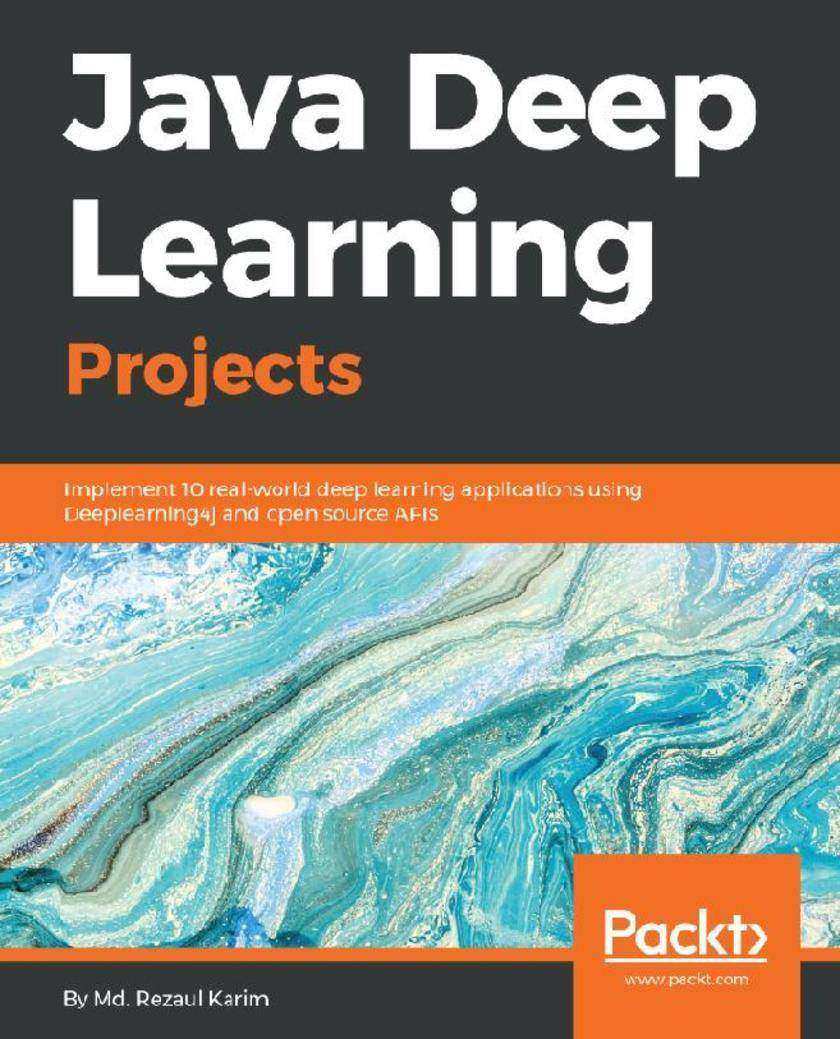
Java Deep Learning Projects
¥90.46
Build and deploy powerful neural network models using the latest Java deep learning libraries About This Book ? Understand DL with Java by implementing real-world projects ? Master implementations of various ANN models and build your own DL systems ? Develop applications using NLP, image classification, RL, and GPU processing Who This Book Is For If you are a data scientist, machine learning professional, or deep learning practitioner keen to expand your knowledge by delving into the practical aspects of deep learning with Java, then this book is what you need! Get ready to build advanced deep learning models to carry out complex numerical computations. Some basic understanding of machine learning concepts and a working knowledge of Java are required. What You Will Learn ? Master deep learning and neural network architectures ? Build real-life applications covering image classification, object detection, online trading, transfer learning, and multimedia analytics using DL4J and open-source APIs ? Train ML agents to learn from data using deep reinforcement learning ? Use factorization machines for advanced movie recommendations ? Train DL models on distributed GPUs for faster deep learning with Spark and DL4J ? Ease your learning experience through 69 FAQs In Detail Java is one of the most widely used programming languages. With the rise of deep learning, it has become a popular choice of tool among data scientists and machine learning experts. Java Deep Learning Projects starts with an overview of deep learning concepts and then delves into advanced projects. You will see how to build several projects using different deep neural network architectures such as multilayer perceptrons, Deep Belief Networks, CNN, LSTM, and Factorization Machines. You will get acquainted with popular deep and machine learning libraries for Java such as Deeplearning4j, Spark ML, and RankSys and you’ll be able to use their features to build and deploy projects on distributed computing environments. You will then explore advanced domains such as transfer learning and deep reinforcement learning using the Java ecosystem, covering various real-world domains such as healthcare, NLP, image classification, and multimedia analytics with an easy-to-follow approach. Expert reviews and tips will follow every project to give you insights and hacks. By the end of this book, you will have stepped up your expertise when it comes to deep learning in Java, taking it beyond theory and be able to build your own advanced deep learning systems. Style and approach A unique, learn-as-you-do approach, as the reader builds on his understanding of deep learning with Java progressively with each project. This book is designed in such a way that implementing each project will empower you with a unique skill set, and enable you to implement the next project more confidently.
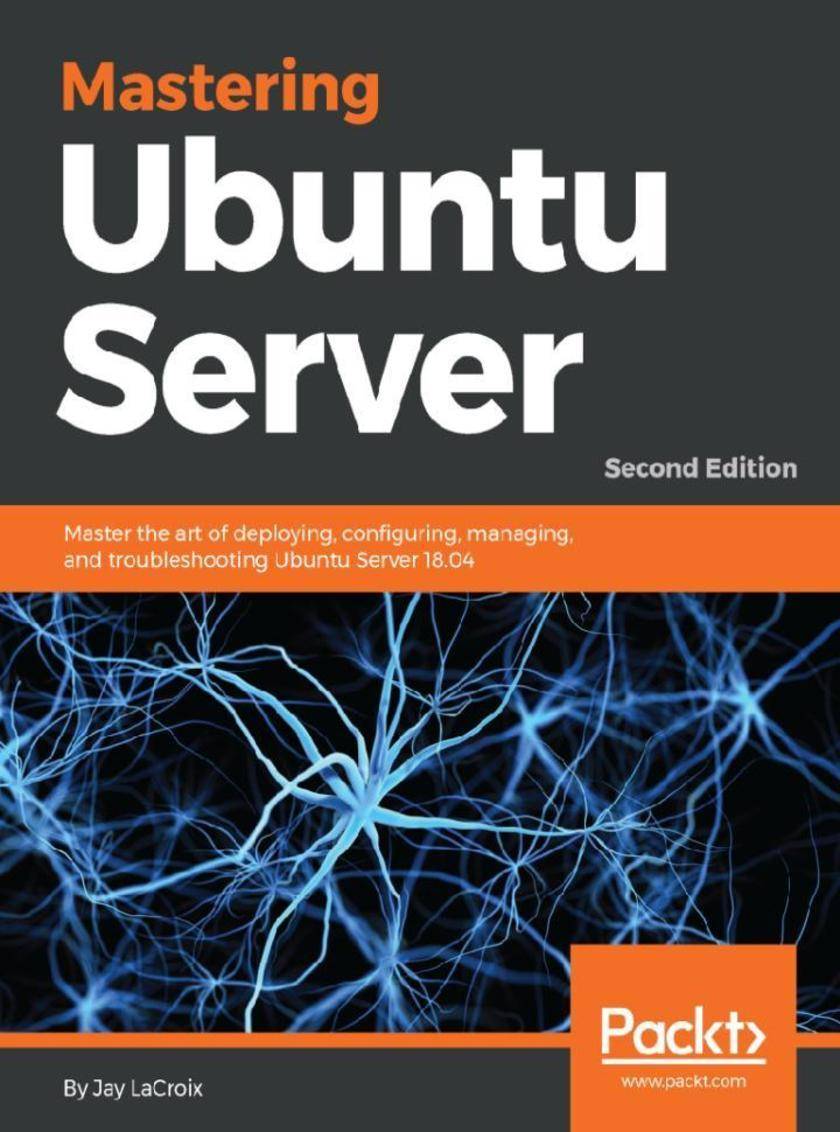
Mastering Ubuntu Server
¥81.74
Get up-to-date with the finer points of Ubuntu Server using this comprehensive guide About This Book ? A practical easy-to-understand book that will teach you how to deploy, maintain and troubleshoot Ubuntu Server ? Get well-versed with newly-added features in Ubuntu 18.04. ? Learn to manage cutting-edge technologies such as virtualization, containers, Nextcloud and more Who This Book Is For This book is intended for readers with intermediate or advanced-beginner skills with Linux, who would like to learn all about setting up servers with Ubuntu Server. This book assumes that the reader knows the basics of Linux, such as editing configuration files and running basic commands. What You Will Learn ? Manage users, groups, and permissions ? Encrypt and decrypt disks with Linux Unified Key Setup (LUKS) ? Set up SSH for remote access, and connect it to other nodes ? Add, remove, and search for packages ? Use NFS and Samba to share directories with other users ? Get to know techniques for managing Apache and MariaDB ? Explore best practices and troubleshooting techniques ? Get familiar with scripting ? Automate server deployments with Ansible In Detail Ubuntu Server has taken the data centers by storm. Whether you're deploying Ubuntu for a large-scale project or for a small office, it is a stable, customizable, and powerful Linux distribution that leads the way with innovative and cutting-edge features. For both simple and complex server deployments, Ubuntu's flexible nature can be easily adapted to meet to the needs of your organization. With this book as your guide, you will learn all about Ubuntu Server, from initial deployment to creating production-ready resources for your network. The book begins with the concept of user management, group management, and filesystem permissions. Continuing into managing storage volumes, you will learn how to format storage devices, utilize logical volume management, and monitor disk usage. Later, you will learn how to virtualize hosts and applications, which will cover setting up KVM/QEMU, as well as containerization with both Docker and LXD. As the book continues, you will learn how to automate configuration with Ansible, as well as take a look at writing scripts. Lastly, you will explore best practices and troubleshooting techniques when working with Ubuntu Server that are applicable to real-world scenarios. By the end of the book, you will be an expert Ubuntu Server administrator who is well-versed in its advanced concepts. Style and approach This book is an advanced guide that will show readers how to administer, manage, and deploy Ubuntu server and will also provide expert-level knowledge on advanced security and backup techniques.
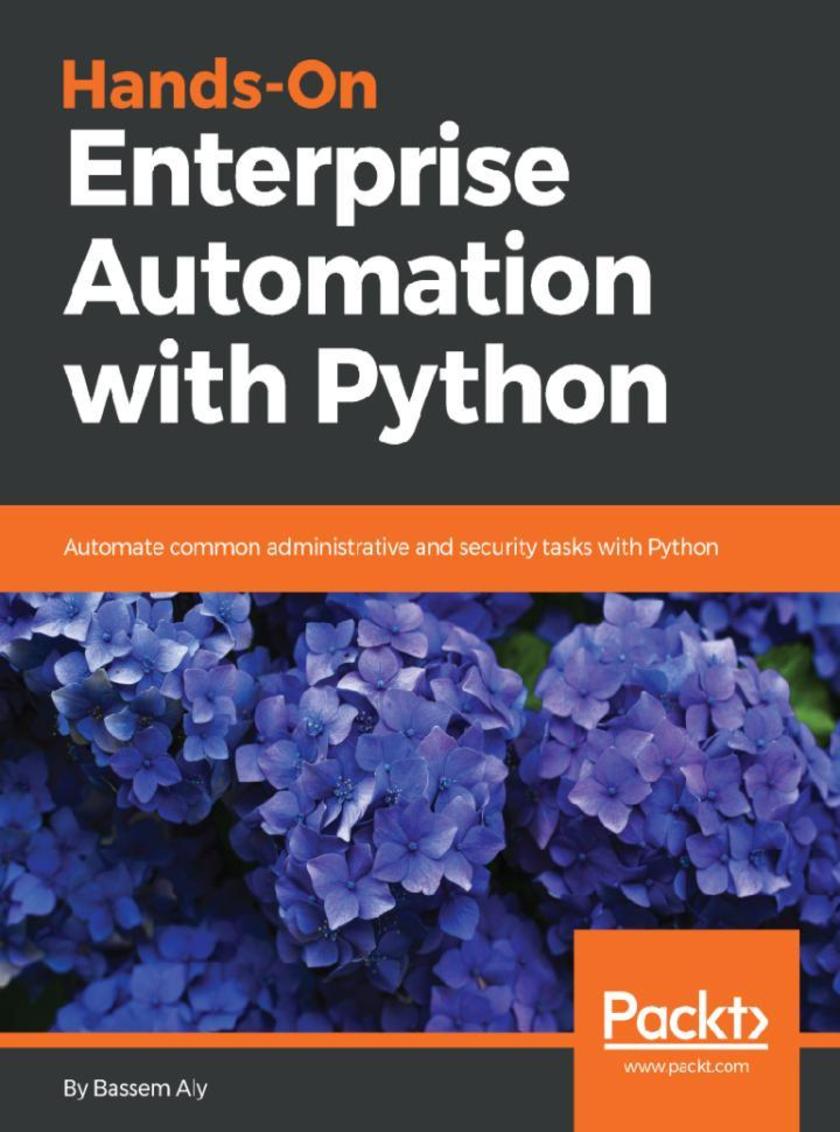
Hands-On Enterprise Automation with Python.
¥73.02
Invent your own Python scripts to automate your infrastructure About This Book ? Make the most of Python libraries and modules to automate your infrastructure ? Leverage Python programming to automate server configurations and administration tasks ? Efficiently develop your Python skill set Who This Book Is For Hands-On Enterprise Automation with Python is for system administrators and DevOps engineers who are looking for an alternative to major automation frameworks such as Puppet and Chef. Basic programming knowledge with Python and Linux shell scripting is necessary. What You Will Learn ? Understand common automation modules used in Python ? Develop Python scripts to manage network devices ? Automate common Linux administration tasks with Ansible and Fabric ? Managing Linux processes ? Administrate VMware, OpenStack, and AWS instances with Python ? Security automation and sharing code on GitHub In Detail Hands-On Enterprise Automation with Python starts by covering the set up of a Python environment to perform automation tasks, as well as the modules, libraries, and tools you will be using. We’ll explore examples of network automation tasks using simple Python programs and Ansible. Next, we will walk you through automating administration tasks with Python Fabric, where you will learn to perform server configuration and administration, along with system administration tasks such as user management, database management, and process management. As you progress through this book, you’ll automate several testing services with Python scripts and perform automation tasks on virtual machines and cloud infrastructure with Python. In the concluding chapters, you will cover Python-based offensive security tools and learn how to automate your security tasks. By the end of this book, you will have mastered the skills of automating several system administration tasks with Python. Style and approach This book will follow a practical approach to help you script and automate tasks using Python.
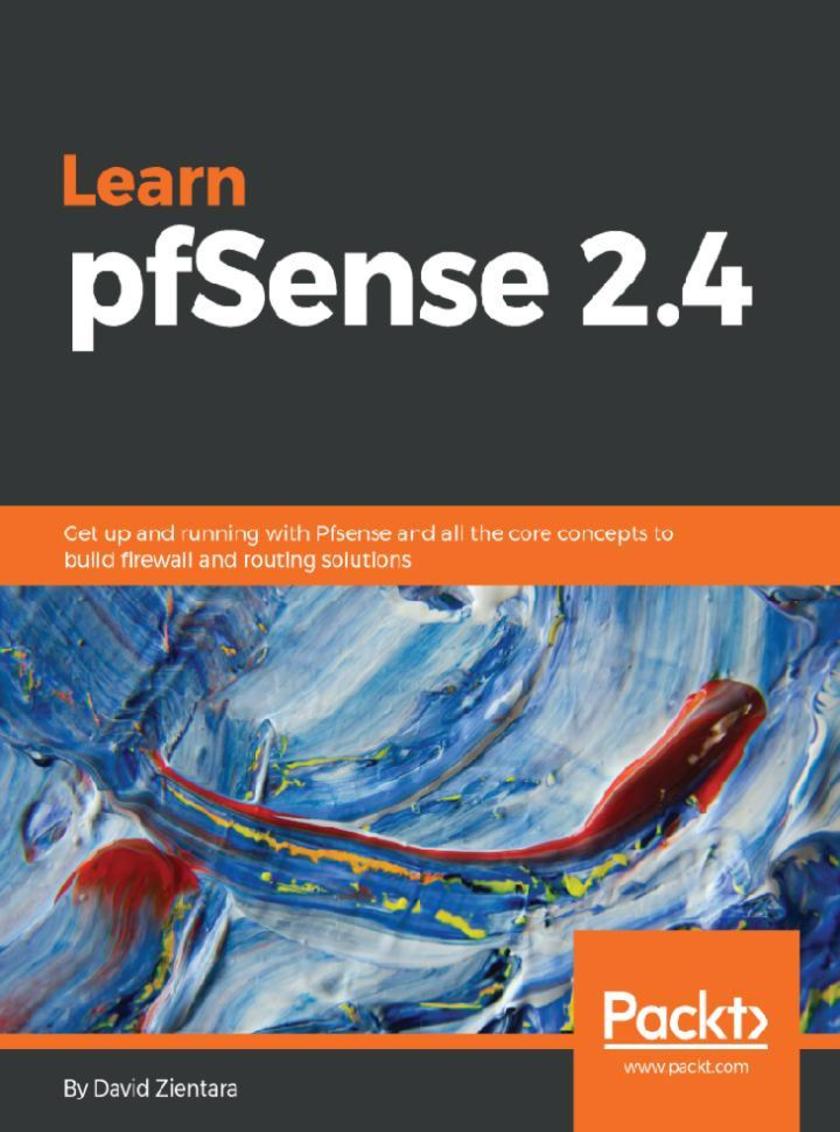
Learn pfSense 2.4
¥78.47
Build, design, and style beautiful and informative applications on the Salesforce Lightning platform Key Features *Build and Test Lightning Components that enhance application usability and adaptability *Apply Security Best Practices to your Custom Lightning Components *Design Lightning Components for Salesforce UIs such as Lightning Pages, Salesforce 1 Application, Communities, and more. Book Description Built on the Salesforce App Cloud, the new Salesforce Lightning Experience combines three major components: Lightning Design System, Lightning App Builder, and Lightning Components, to provide an enhanced user experience. This book will enable you to quickly create modern, enterprise apps with Lightning Component Framework. You will start by building simple Lightning Components and understanding the Lightning Components architecture. The chapters cover the basics of Lightning Component Framework semantics and syntax, the security features provided by Locker Service, and use of third-party libraries inside Lightning Components. The later chapters focus on debugging, performance tuning, testing using Lightning Testing Services, and how to publish Lightning Components on Salesforce AppExchange. What you will learn *Understand Lightning Components architecture *Learn Locker security best practices *Debug and Improve performance of your Lightning Components *Use third-party libraries along with Lightning Component Framework *Learn how to publish Lightning Components on AppExchange *Use Lightning Out to take your Lightning Components outside the Salesforce platform Who this book is for This book is for Salesforce developers or developers from other platforms who are familiar with HTML, CSS, and JavaScript and want to build and test Salesforce Lightning components. No knowledge of Salesforce Lightning is required.
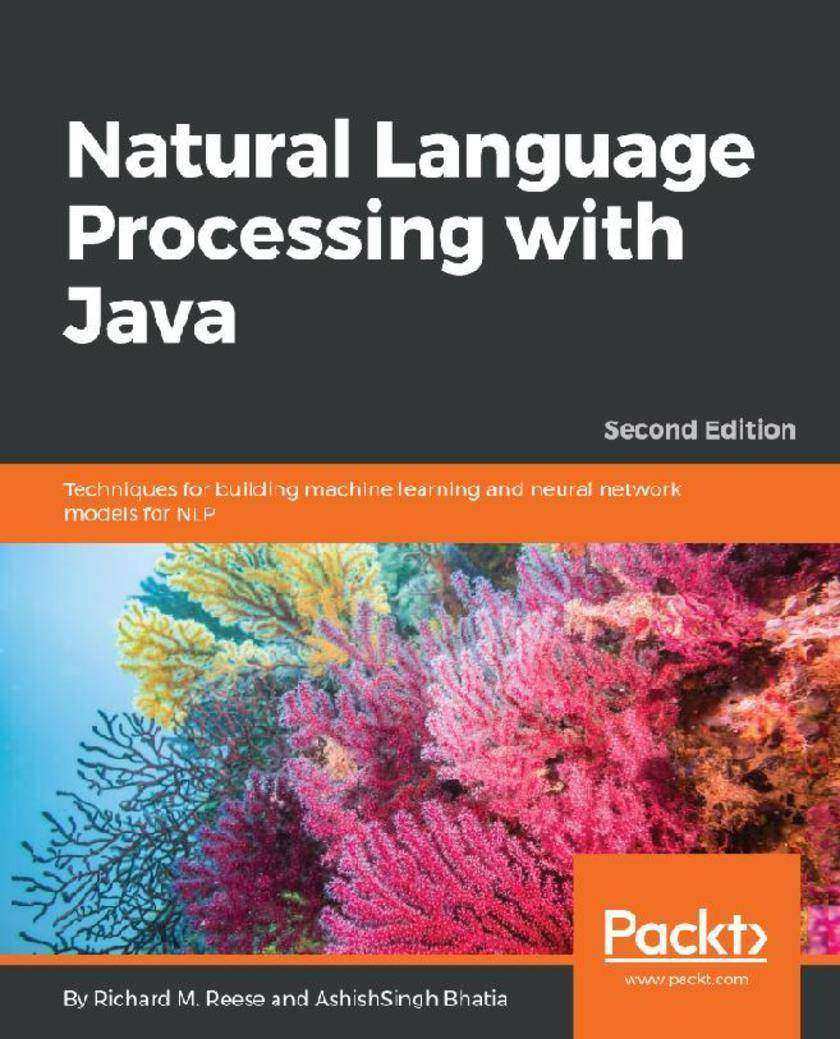
Natural Language Processing with Java
¥69.75
Discover how you can migrate a traditional on-premise SQL server database to a cloud-based solution with Microsoft Azure. Built with database administrators in mind, this book emulates different scenarios you might come across while working with large, complex SQL database migrations and provides solutions for effectively managing the migrated databases. Key Features *Implement backup, restore, and recovery of Azure SQL databases *Create shards and elastic pools to scale Azure SQL databases *Automate common management tasks with PowerShell *Implement over 40 practical activities and exercises across 24 topics to reinforce your learning Book Description As the cloud version of SQL Server, Azure SQL Database differs in key ways when it comes to management, maintenance, and administration. It’s important to know how to administer SQL Database to fully benefit from all of the features and functionality that it provides. This book addresses important aspects of an Azure SQL Database instance such as migration, backup restorations, pricing policies, security, scalability, monitoring, performance optimization, high availability, and disaster recovery. It is a complete guide for database administrators, and ideal for those who are planning to migrate from on premise SQL Server database to an Azure SQL Server database. What you will learn *Learn how to provision a new database or migrate an existing on-premise solution *Understand how to backup, restore, secure, and scale your own Azure SQL Database *Optimize the performance by monitoring and tuning your cloud-based SQL instance *Implement high availability and disaster recovery procedures with SQL Database *Develop a roadmap for your own scalable cloud solution with Azure SQL Database Who this book is for This book is ideal for database administrators, database developers, or application developers who are interested in developing or migrating existing applications with Azure SQL Database. Prior experience of working with an on-premise SQL Server deployment and brief knowledge of PowerShell and C# are recommended prerequisites.
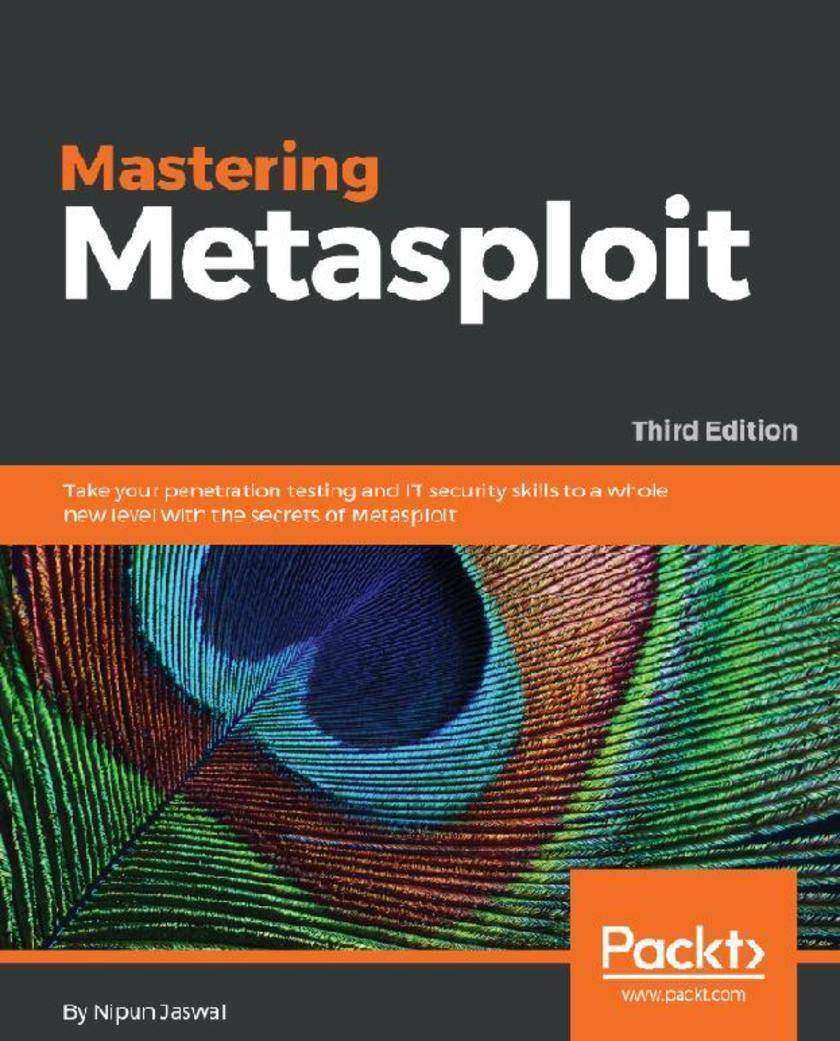
Mastering Metasploit
¥81.74
Discover the next level of network defense with the Metasploit framework About This Book ? Gain the skills to carry out penetration testing in complex and highly-secured environments ? Become a master using the Metasploit framework, develop exploits, and generate modules for a variety of real-world scenarios ? Get this completely updated edition with new useful methods and techniques to make your network robust and resilient Who This Book Is For This book is a hands-on guide to penetration testing using Metasploit and covers its complete development. It shows a number of techniques and methodologies that will help you master the Metasploit framework and explore approaches to carrying out advanced penetration testing in highly secured environments. What You Will Learn ? Develop advanced and sophisticated auxiliary modules ? Port exploits from PERL, Python, and many more programming languages ? Test services such as databases, SCADA, and many more ? Attack the client side with highly advanced techniques ? Test mobile and tablet devices with Metasploit ? Bypass modern protections such as an AntiVirus and IDS with Metasploit ? Simulate attacks on web servers and systems with Armitage GUI ? Script attacks in Armitage using CORTANA scripting In Detail We start by reminding you about the basic functionalities of Metasploit and its use in the most traditional ways. You’ll get to know about the basics of programming Metasploit modules as a refresher and then dive into carrying out exploitation as well building and porting exploits of various kinds in Metasploit. In the next section, you’ll develop the ability to perform testing on various services such as databases, Cloud environment, IoT, mobile, tablets, and similar more services. After this training, we jump into real-world sophisticated scenarios where performing penetration tests are a challenge. With real-life case studies, we take you on a journey through client-side attacks using Metasploit and various scripts built on the Metasploit framework. By the end of the book, you will be trained specifically on time-saving techniques using Metasploit. Style and approach This is a step-by-step guide that provides great Metasploit framework methodologies. All the key concepts are explained details with the help of examples and demonstrations that will help you understand everything you need to know about Metasploit.
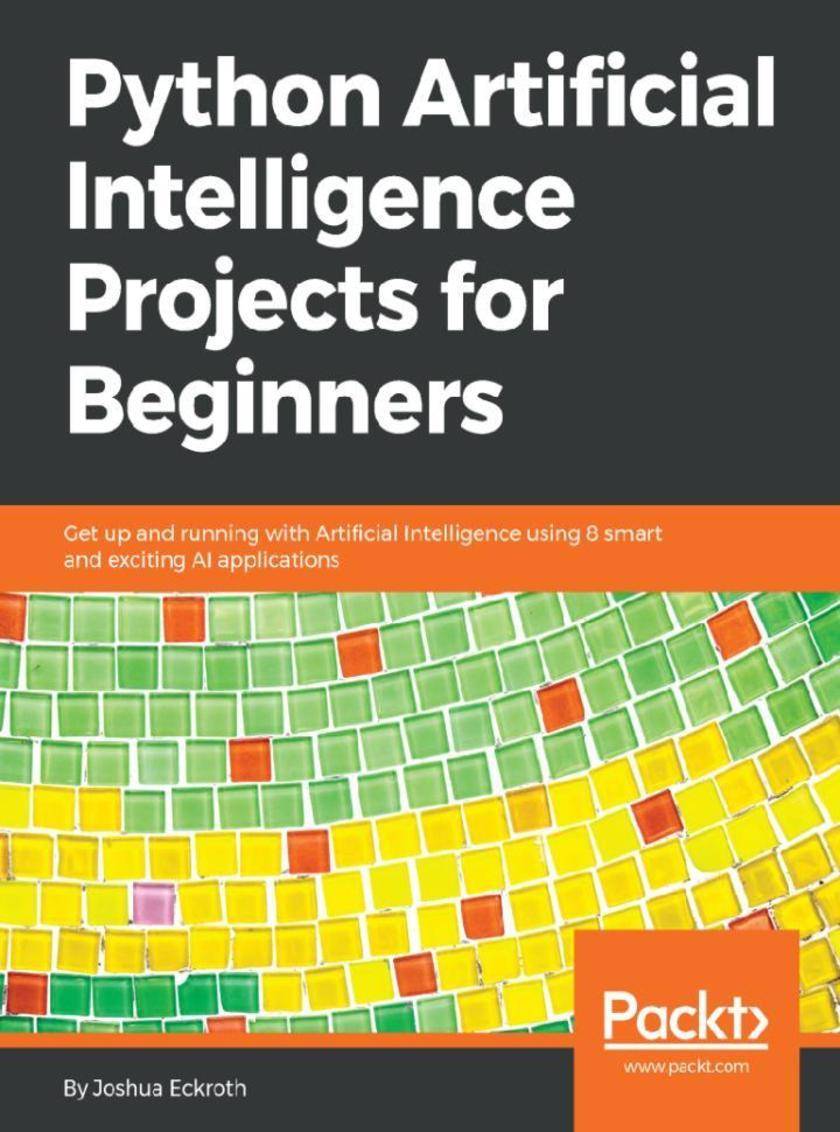
Python Artificial Intelligence Projects for Beginners
¥43.59
Real-world examples of cross-browser, mobile, and data-driven testing with all the latest features of Selenium WebDriver 3 Key Features *Unlock the full potential of Selenium to test your web applications *Use Selenium Grid for faster, parallel running, and cross-browser testing *Test iOS and Android Apps with Appium Book Description Selenium WebDriver is an open source automation tool implemented through a browser-specific driver, which sends commands to a browser and retrieves results. The latest version of Selenium 3 brings with it a lot of new features that change the way you use and setup Selenium WebDriver. This book covers all those features along with the source code, including a demo website that allows you to work with an HMTL5 application and other examples throughout the book. Selenium WebDriver 3 Practical Guide will walk you through the various APIs of Selenium WebDriver, which are used in automation tests, followed by a discussion of the various WebDriver implementations available. You will learn to strategize and handle rich web UI using advanced WebDriver API along with real-time challenges faced in WebDriver and solutions to handle them. You will discover different types and domains of testing such as cross-browser testing, load testing, and mobile testing with Selenium. Finally, you will also be introduced to data-driven testing using TestNG to create your own automation framework. By the end of this book, you will be able to select any web application and automate it the way you want. What you will learn *Understand what Selenium 3 is and how is has been improved than its predecessor *Use different mobile and desktop browser platforms with Selenium 3 *Perform advanced actions, such as drag-and-drop and action builders on web page *Learn to use Java 8 API and Selenium 3 together *Explore remote WebDriver and discover how to use it *Perform cross browser and distributed testing with Selenium Grid *Use Actions API for performing various keyboard and mouse actions Who this book is for Selenium WebDriver 3 Practical Guide is for software quality assurance/testing professionals, software project managers, or software developers interested in using Selenium for testing their applications. Prior programming experience in Java is necessary.
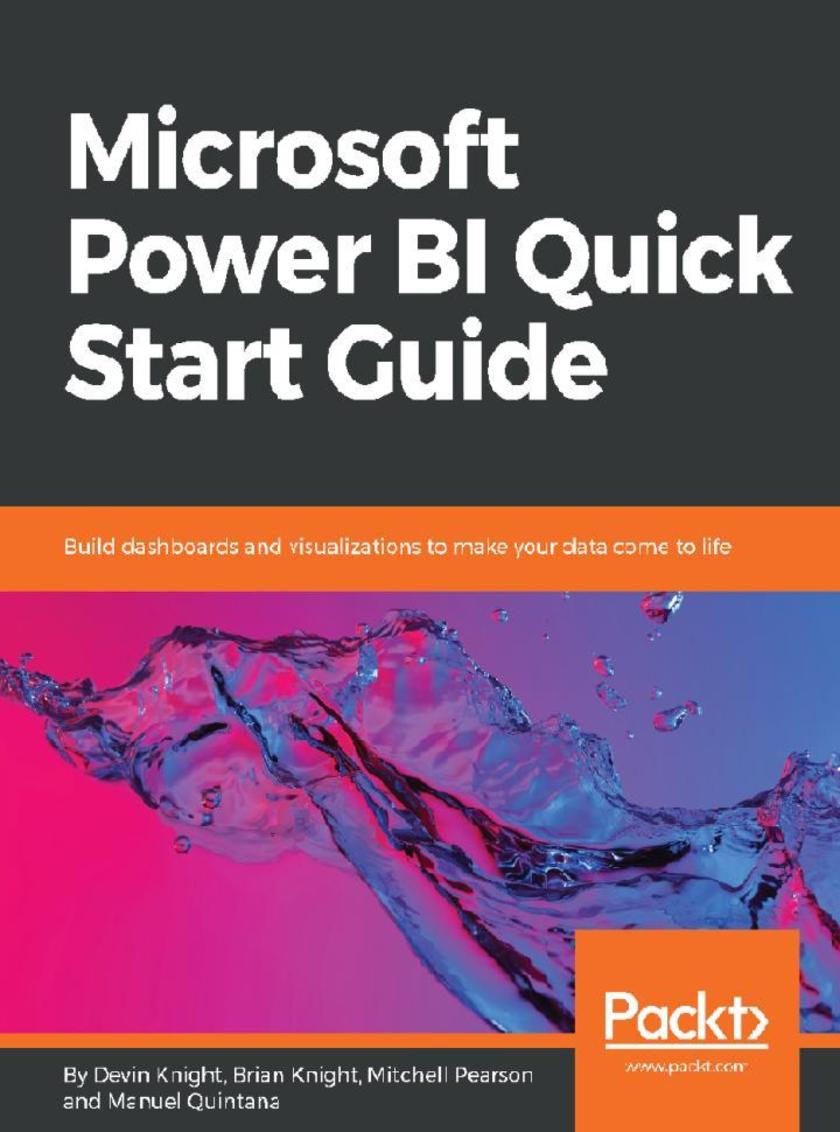
Microsoft Power BI Quick Start Guide
¥52.31
Develop robust, Scala-powered projects with the help of machine learning libraries such as SparkML to harvest meaningful insight Key Features *Gain hands-on experience in building data science projects with Scala *Exploit powerful functionalities of machine learning libraries *Use machine learning algorithms and decision tree models for enterprise apps Book Description Scala, together with the Spark Framework, forms a rich and powerful data processing ecosystem. Modern Scala Projects is a journey into the depths of this ecosystem. The machine learning (ML) projects presented in this book enable you to create practical, robust data analytics solutions, with an emphasis on automating data workflows with the Spark ML pipeline API. This book showcases or carefully cherry-picks from Scala’s functional libraries and other constructs to help readers roll out their own scalable data processing frameworks. The projects in this book enable data practitioners across all industries gain insights into data that will help organizations have strategic and competitive advantage. Modern Scala Projects focuses on the application of supervisory learning ML techniques that classify data and make predictions. You'll begin with working on a project to predict a class of flower by implementing a simple machine learning model. Next, you'll create a cancer diagnosis classification pipeline, followed by projects delving into stock price prediction, spam filtering, fraud detection, and a recommendation engine. By the end of this book, you will be able to build efficient data science projects that fulfil your software requirements. What you will learn *Create pipelines to extract data or analytics and visualizations *Automate your process pipeline with jobs that are reproducible *Extract intelligent data efficiently from large, disparate datasets *Automate the extraction, transformation, and loading of data *Develop tools that collate, model, and analyze data *Maintain the integrity of data as data flows become more complex *Develop tools that predict outcomes based on “pattern discovery” *Build really fast and accurate machine-learning models in Scala Who this book is for Modern Scala Projects is for Scala developers who would like to gain some hands-on experience with some interesting real-world projects. Prior programming experience with Scala is necessary.
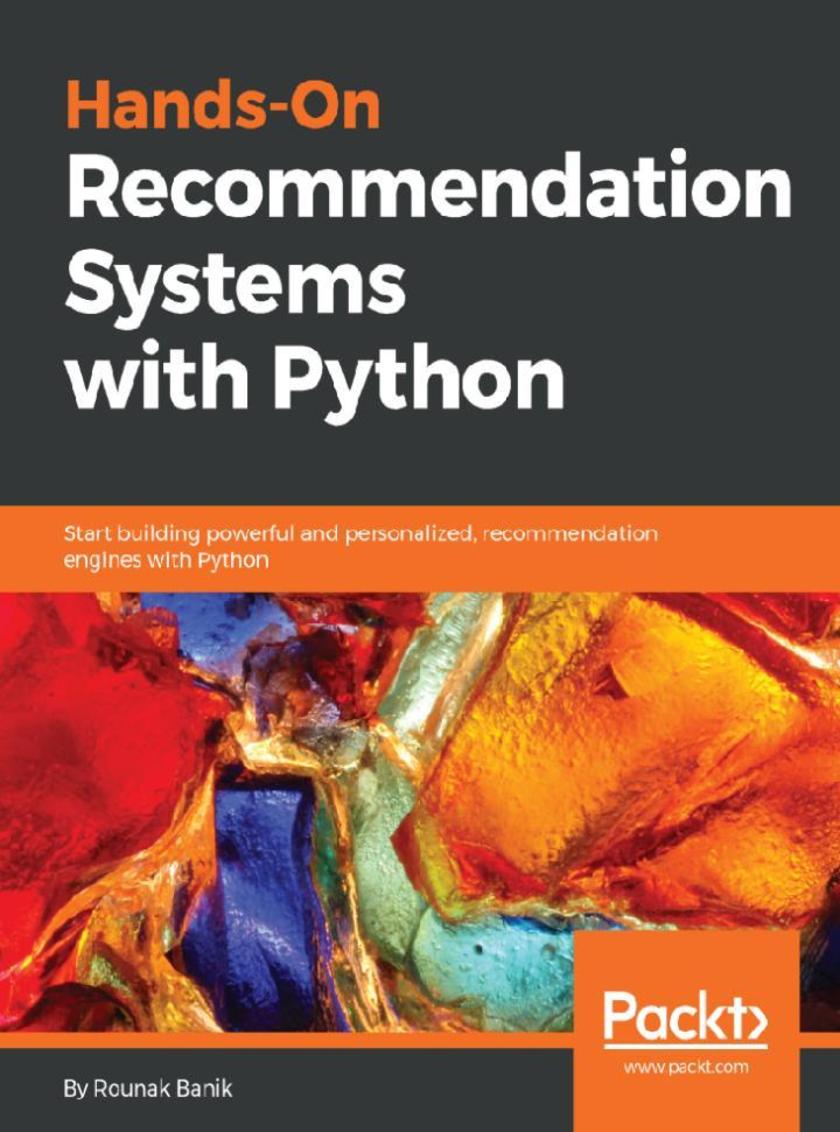
Hands-On Recommendation Systems with Python
¥52.31
Secure your Java applications by integrating the Spring Security framework in your code Key Features *Provide authentication, authorization and other security features for Java applications. *Learn how to secure microservices, cloud, and serverless applications easily *Understand the code behind the implementation of various security features Book Description Security is one of the most vital concerns for any organization. The complexity of an application is compounded when you need to integrate security with existing code, new technology, and other frameworks. This book will show you how to effectively write Java code that is robust and easy to maintain. Hands-On Spring Security 5 for Reactive Applications starts with the essential concepts of reactive programming, Spring Framework, and Spring Security. You will then learn about a variety of authentication mechanisms and how to integrate them easily with the Spring MVC application. You will also understand how to achieve authorization in a Spring WebFlux application using Spring Security.You will be able to explore the security confgurations required to achieve OAuth2 for securing REST APIs and integrate security in microservices and serverless applications. This book will guide you in integrating add-ons that will add value to any Spring Security module. By the end of the book, you will be proficient at integrating Spring Security in your Java applications What you will learn *Understand how Spring Framework and Reactive application programming are connected *Implement easy security confgurations with Spring Security expressions *Discover the relationship between OAuth2 and OpenID Connect *Secure microservices and serverless applications with Spring *Integrate add-ons, such as HDIV, Crypto Module, and CORS support *Apply Spring Security 5 features to enhance your Java reactive applications Who this book is for If you are a Java developer who wants to improve application security, then this book is for you. A basic understanding of Spring, Spring Security framework, and reactive applications is required to make the most of the book.
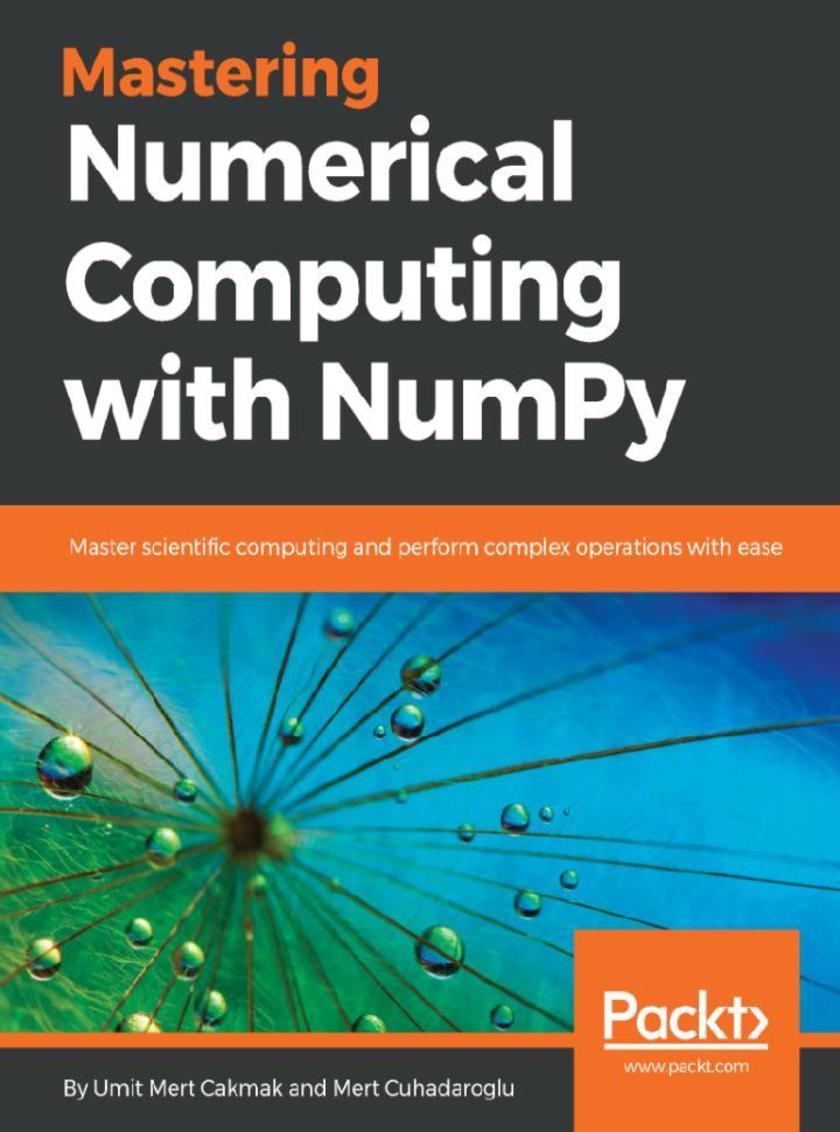
Mastering Numerical Computing with NumPy
¥63.21
Enhance the power of NumPy and start boosting your scientific computing capabilities About This Book ? Grasp all aspects of numerical computing and understand NumPy ? Explore examples to learn exploratory data analysis (EDA), regression, and clustering ? Access NumPy libraries and use performance benchmarking to select the right tool Who This Book Is For Mastering Numerical Computing with NumPy is for you if you are a Python programmer, data analyst, data engineer, or a data science enthusiast, who wants to master the intricacies of NumPy and build solutions for your numeric and scientific computational problems. You are expected to have familiarity with mathematics to get the most out of this book. What You Will Learn ? Perform vector and matrix operations using NumPy ? Perform exploratory data analysis (EDA) on US housing data ? Develop a predictive model using simple and multiple linear regression ? Understand unsupervised learning and clustering algorithms with practical use cases ? Write better NumPy code and implement the algorithms from scratch ? Perform benchmark tests to choose the best configuration for your system In Detail NumPy is one of the most important scientific computing libraries available for Python. Mastering Numerical Computing with NumPy teaches you how to achieve expert level competency to perform complex operations, with in-depth coverage of advanced concepts. Beginning with NumPy's arrays and functions, you will familiarize yourself with linear algebra concepts to perform vector and matrix math operations. You will thoroughly understand and practice data processing, exploratory data analysis (EDA), and predictive modeling. You will then move on to working on practical examples which will teach you how to use NumPy statistics in order to explore US housing data and develop a predictive model using simple and multiple linear regression techniques. Once you have got to grips with the basics, you will explore unsupervised learning and clustering algorithms, followed by understanding how to write better NumPy code while keeping advanced considerations in mind. The book also demonstrates the use of different high-performance numerical computing libraries and their relationship with NumPy. You will study how to benchmark the performance of different configurations and choose the best for your system. By the end of this book, you will have become an expert in handling and performing complex data manipulations. Style and approach This mastering guide will help you master your skills required to perform a complex numerical computation. The book contains the right mixture of theory and practical examples that will help you in dealing with the advanced NumPy and build solutions for your numeric and scientific computational problems

Building RESTful Web Services with Java EE 8
¥52.31
Architect and design data-intensive applications and, in the process, learn how to collect, process, store, govern, and expose data for a variety of use cases Key Features *Integrate the data-intensive approach into your application architecture *Create a robust application layout with effective messaging and data querying architecture *Enable smooth data flow and make the data of your application intensive and fast Book Description Are you an architect or a developer who looks at your own applications gingerly while browsing through Facebook and applauding it silently for its data-intensive, yet ?uent and efficient, behaviour? This book is your gateway to build smart data-intensive systems by incorporating the core data-intensive architectural principles, patterns, and techniques directly into your application architecture. This book starts by taking you through the primary design challenges involved with architecting data-intensive applications. You will learn how to implement data curation and data dissemination, depending on the volume of your data. You will then implement your application architecture one step at a time. You will get to grips with implementing the correct message delivery protocols and creating a data layer that doesn’t fail when running high traffic. This book will show you how you can divide your application into layers, each of which adheres to the single responsibility principle. By the end of this book, you will learn to streamline your thoughts and make the right choice in terms of technologies and architectural principles based on the problem at hand. What you will learn *Understand how to envision a data-intensive system *Identify and compare the non-functional requirements of a data collection component *Understand patterns involving data processing, as well as technologies that help to speed up the development of data processing systems *Understand how to implement Data Governance policies at design time using various Open Source Tools *Recognize the anti-patterns to avoid while designing a data store for applications *Understand the different data dissemination technologies available to query the data in an efficient manner *Implement a simple data governance policy that can be extended using Apache Falcon Who this book is for This book is for developers and data architects who have to code, test, deploy, and/or maintain large-scale, high data volume applications. It is also useful for system architects who need to understand various non-functional aspects revolving around Data Intensive Systems.
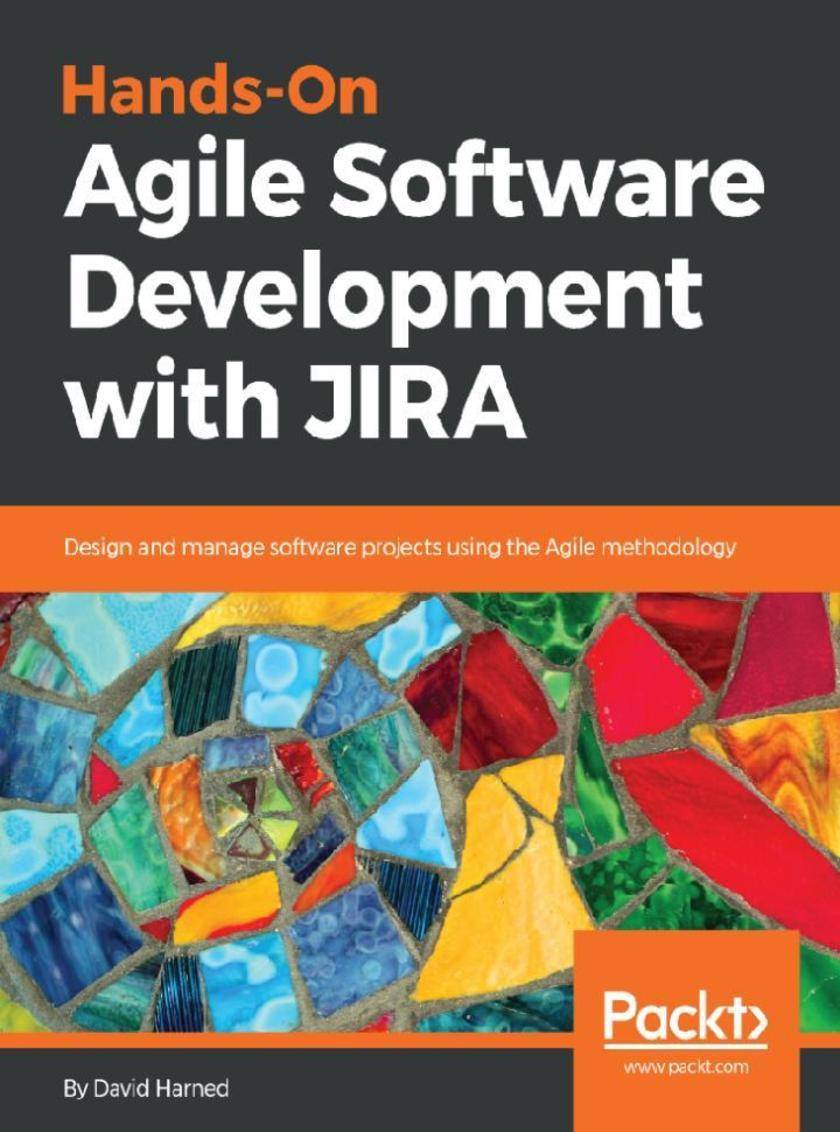
Hands-On Agile Software Development with JIRA
¥52.31
Plan, track, and release great software Key Features * Learn to create reports and dashboard for effective project management * Implement your development strategy in JIRA. * Practices to help you manage the issues in the development team Book Description As teams scale in size, project management can get very complicated. One of the best tools to deal with this kind of problem is JIRA. This book will start by organizing your project requirements and the principles of Agile development to get you started. You will then be introduced to set up a JIRA account and the JIRA ecosystem to help you implement a dashboard for your team's work and issues. You will learn how to manage any issues and bugs that might emerge in the development stage. Going ahead, the book will help you build reports and use them to plan the releases based on the study of the reports. Towards the end, you will come across working with the gathered data and create a dashboard that helps you track the project's development. What you will learn * Create your first project (and manage existing projects) in JIRA * Manage your board view and backlogs in JIRA * Run a Scrum Sprint project in JIRA * Create reports (including topic-based reports) * Forecast using versions * Search for issues with JIRA Query Language (JQL) * Execute bulk changes to issues * Create custom filters, dashboards, and widgets * Create epics, stories, bugs, and tasks Who this book is for This book is for administrators who wants to apply the Agile approach to managing the issues, bugs, and releases in their software development projects using JIRA.




 购物车
购物车 个人中心
个人中心



